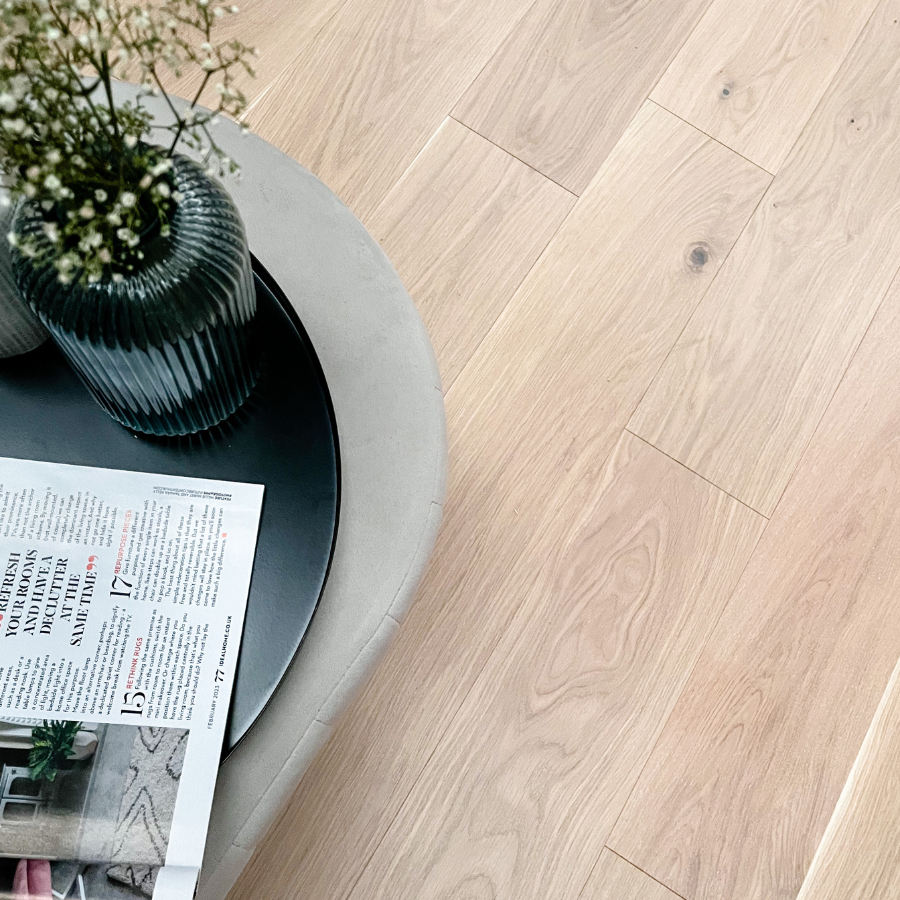Sustainable Flooring Choices for Eco-Friendly Homes
21st Feb 2024
In the quest for a more sustainable lifestyle, every choice can make a significant impact. As we each play our part in preserving the environment, the materials within our homes come under just as much scrutiny as the products we bring in. One such component, often overlooked in its environmental significance, is our flooring. Whether you are building a new home, renovating, or just considering an upgrade, the selection of sustainable flooring can contribute considerably to eco-friendly living. This comprehensive guide dives deep into sustainable flooring options, offering eco-conscious homeowners and interior designers a roadmap to more planet-friendly choices.
A Safe Footprint from the Ground Up
Imagine this—walking barefoot on a floor that's not only smooth and inviting but also carries with it the warmth of the earth from which it was sourced. Sustainable flooring is more than just a design choice; it's the underpinning of a healthy, eco-friendly home. The very feel of the floor beneath our feet can transport us closer to nature, and with the options available today, we can achieve this without sacrificing style or quality. But before we get into the nitty-gritty of specific materials, it's essential to understand why we should be switching to sustainable flooring in the first place.
The Environmental Imperative
Flooring can directly impact a variety of environmental factors, including deforestation, emissions, and the durability and longevity of materials. Many traditional flooring materials, from vinyl to certain hardwoods, aren't as friendly to the environment as they are to the aesthetics of our homes. By choosing sustainable options, we can reduce our carbon footprint, promote responsible forestry and manufacturing practices, and enhance indoor air quality.
Health Considerations
The floor, being the largest surface area in any room, plays a crucial role in indoor air quality. Harmful emissions from some products, a phenomenon known as "off-gassing," can affect our respiratory health and the environment. Opting for natural, nontoxic materials helps eliminate these risks and creates a healthier living space for you and your family.
The Wood is Good, If It's Sourced Right
Wood flooring has long been the hallmark of quality and style. When sourced from responsibly managed forests or reclaimed from other uses, it can also be a standout in sustainability.

Look out for FSC and PEFC certified wood flooring
A Legacy of Durability and Timeless Style
Wood is a timeless flooring material, known for its durability. Properly maintained, wood floors can last a lifetime, and beyond. They also offer a classic aesthetic that's hard to match with man-made materials.
Recyclability and Reusability
Should you decide to change your flooring, or at the time of building demolition, wood can be reused or repurposed into other projects, preventing unnecessary waste. Furthermore, wood is an excellent long-term carbon storage medium; by choosing wood flooring, we support forestation efforts that are critical for climate balance.
But What Exactly is Sustainable Wood Flooring?
Not all wood flooring is created equal in terms of sustainability. Here, we're looking at certified sustainable woods, such as those approved by the Forest Stewardship Council (FSC). These organisations ensure that every tree used is replaced, and that forests are managed in an environmentally appropriate and socially beneficial way.
No-Vinyl Tile Flooring: The PVC-Free Way
Vinyl Tile flooring is unbeatable in the practical benefits it offers, including being scratch resistant and 100% waterproof. However, since they are made from PVC, their environmental credentials fall short in comparison to other flooring options. In recent years, many flooring manufacturers have recognised this and have responded with PVC-free tiles which offer all of the practical and aesthetic benefits of vinyl.
The Benefits of No-Vinyl Tile
Just like its traditional counterpart, no-vinyl tile is hard-wearing and waterproof, making it ideal for high-traffic areas and moist conditions. The main difference is in the lack of PVC and phthalates, which are major environmental and health concerns.
Durable and Eco-Friendly
Manufacturers are increasingly turning to compounds such as urethane or polypropylene to create tiles that offer the same durability without the environmental drawbacks. This means you can achieve a waterproof floor without contributing to the production of hazardous chemicals.
Recycled Materials: Design with a Second Life
From glass to metal, an array of recycled materials can be turned into gorgeous, unique flooring options that help keep waste out of landfills.
A Kaleidoscope Beneath Your Feet
Recycled glass and metal countertops have been a design trend for some time, but now these materials are finding their way into flooring. The result is a floor that shimmers and shines with the knowledge that it's made from something that would have been thrown away.
The Process and Practicality
Flooring from recycled materials goes through an extensive process to ensure it's suitable for its new purpose. The result is a floor that can handle the wear and tear of everyday life without sacrificing on sustainability.
Wool You or Won't You: Carpets with a Conscience

wool is a biodegradable material making it a sustainable carpet option
Carpet has gotten a bad rap in recent years, often due to concerns over materials and maintenance. However, certain carpets can be part of a sustainable flooring solution.
Natural Insulation
Wool not only feels good underfoot but also serves as a natural insulator, helping to keep rooms warm and reducing heating costs. As a bonus, it dampens sound, making it an excellent choice for bedrooms and other areas where noise can be an issue.
The Long and Short of it
Wool, albeit slightly more expensive than some synthetic fibers, is exceptionally hard-wearing. A wool carpet with minimal care can last for decades, twice as long as the average synthetic alternative, cutting down on replacement and waste. It is also biodegradable and recyclable, helping to significantly contribute to the health of the environment.
Sisal, Jute, and Seagrass: The Natural Choice
These plant-based flooring materials offer an organic, exotic look with a minimal environmental footprint.
The Sustainability of Sisal, Jute, and Seagrass
Extracted from the agave plant, sisal is not only durable but grows in an environmentally friendly manner. Jute, meanwhile, grows like a weed, requiring no pesticides. Seagrass, harvested from oceanic fields, is a renewable resource.
Maintenance and Longevity
These materials don't favour harsh chemical treatments and high-maintenance cleaning methods, thanks to their natural resistance to microbial growth. A daily sweep or light vacuum is usually sufficient to keep them in top shape.
Other Eco-Friendly Options: Cork and Bamboo
Beyond wood and traditional tile, cork and bamboo provide two strong contenders in the sustainable flooring field.
Cork: More Than Just a Bottle Stopper
Cork is a rapidly renewable resource that can be harvested without felling the tree, making it one of the most environmentally friendly flooring options available today. Its natural buoyancy also makes for a soft and comfortable surface to walk on.
Bamboo: Beauty and Strength in Abundance
Bamboo's quick growth and natural strength make it an ideal flooring material. It can be harvested every few years without harming the plant or the surrounding ecosystem. Like cork, bamboo offers a unique aesthetic with a variety of options to suit different design palettes.
Installation and Maintenance: Keeping it Green All The Way
Sustainable flooring doesn't stop at materials; it extends to how the flooring is installed and maintained.
The Importance of Adhesives
Traditional flooring adhesives can contain harmful compounds and have high volatile organic compound (VOC) emissions. Choosing eco-friendly adhesives with low or no VOCs is essential to maintain air quality in the home.
Proper Care for the Long Haul
Proper maintenance can add years, even decades, to the life span of your flooring. Regular cleaning and care with nontoxic, environmentally safe products keep your floors looking their best without damaging the environment.
In Conclusion: Flooring Your Home with Purpose
Each step of constructing or renovating your home offers an opportunity to further your commitment to sustainability. By choosing flooring materials that are durable, recyclable, and sourced responsibly, you're not just making a statement — you're making a difference. Remember, the footprint of your home starts from the ground up, and a floor laid with sustainable choices is a firm foundation for eco-friendly living.
By understanding the importance of these choices and comparing the options available, you're well-equipped to make informed decisions that align with your values. The road to a more sustainable future is under your feet. Where will you step next?


